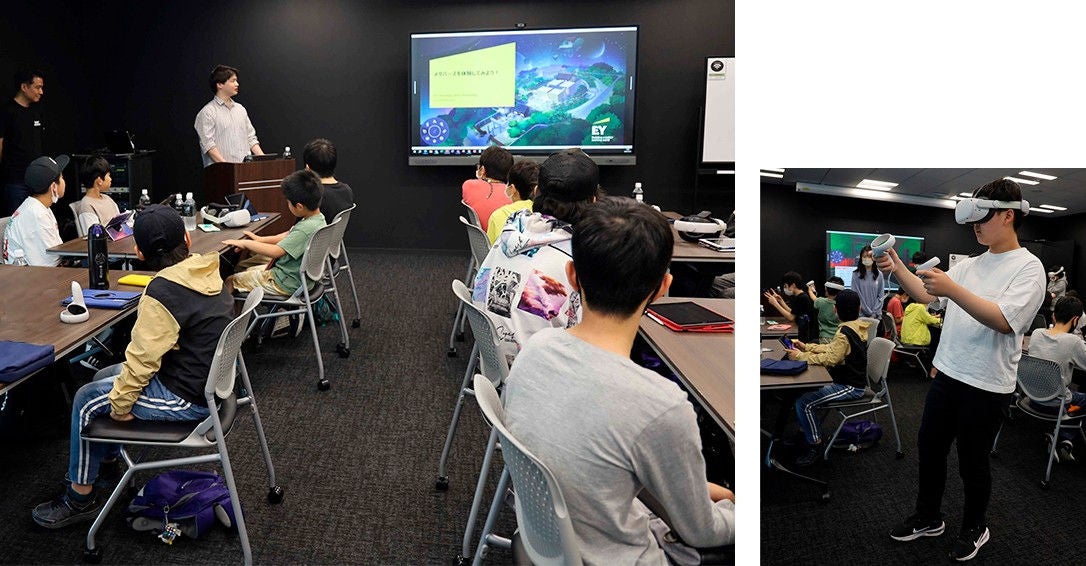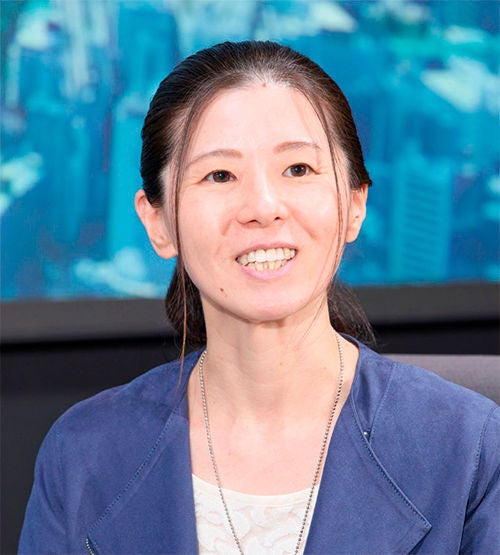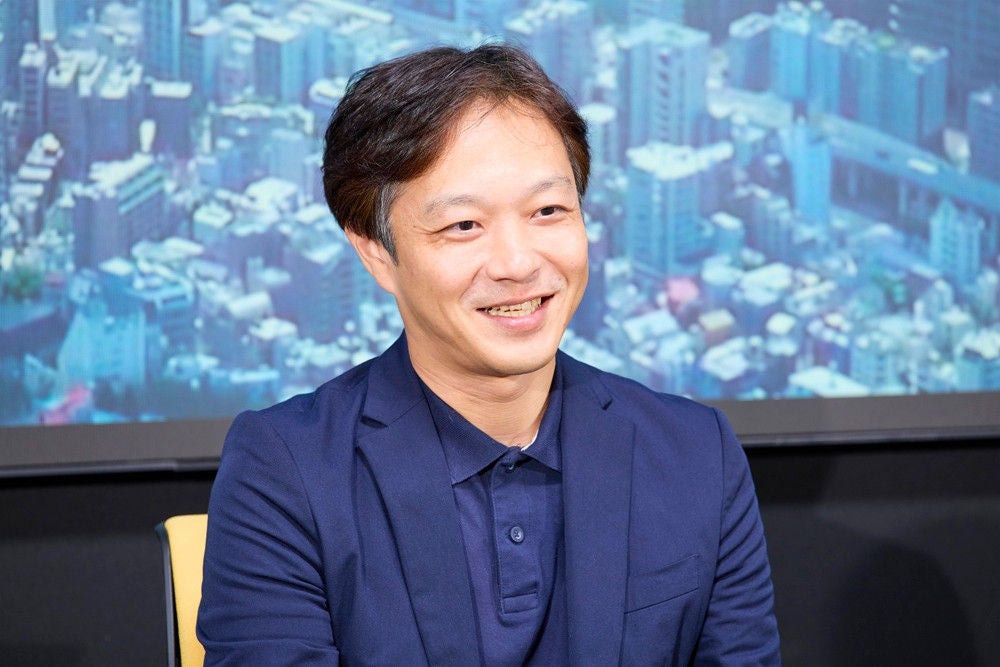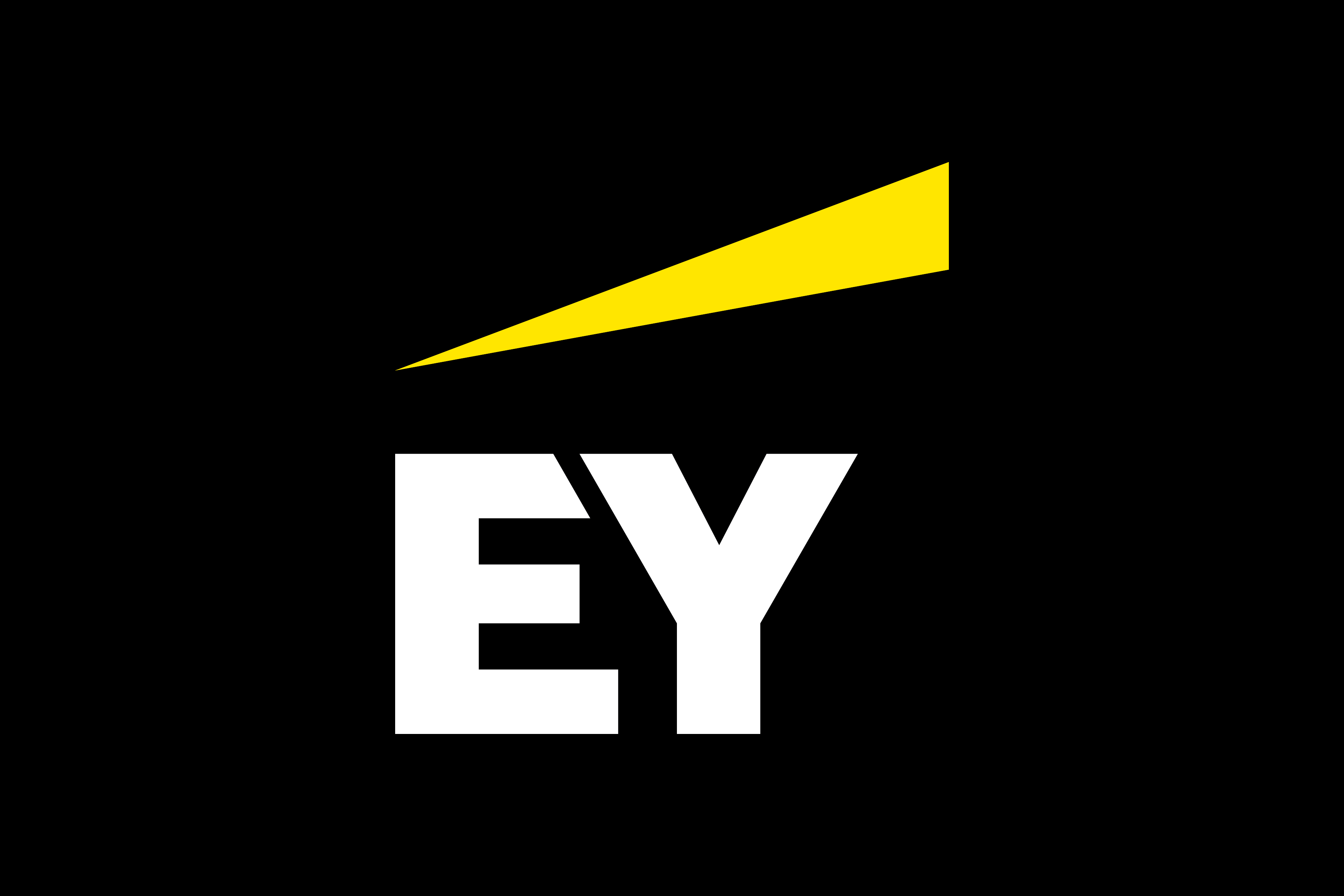EY refers to the global organization, and may refer to one or more, of the member firms of Ernst & Young Global Limited, each of which is a separate legal entity. Ernst & Young Global Limited, a UK company limited by guarantee, does not provide services to clients.

Creating social value - EY is fulfilling its corporate responsibilities through EY Ripples, in which it leverages the professional knowledge of its people across various fields to carry out pro bono activities that benefit society.
EY Japan is playing its part by operating a next-generation educational program utilizing the latest technologies.
In brief
- Controlling a self-made avatar within the metaverse provides children with an opportunity to think about how to communicate with others.
- Using design thinking to find the best solutions to a problem.
- Showing how a pro bono project for EY Ripples leverages how EY does business to create a positive impact in society.

Section 1
Experiencing the metaverse and creating avatars using VR headsets and tablets
The workshop enabled children to create and control their own avatars and to think about different ways to communicate with others.
This next-generation educational program is being carried out in conjunction with Education A³ of Fukuoka City (Representative Director: Yuichi Kusaba ) which is a Certified NPO Corporation. Education A³ is working to eliminate disparities within children’s education, particularly in the Fukuoka area, by operating alternative schools for children who are unable to attend mainstream education. The program aims to help these children nurture problem-solving abilities and ways of thinking that differ from what they would learn in mainstream classes.
It has four sessions and caters to students across a variety of age ranges, from the third grade of elementary school to high school. The first session was held at EY Digital Hub Fukuoka, facility established by EY to lead Japan’s digital transformation. Members of EY Strategy and Consulting’s Technology Consulting team provided a communication experience using the metaverse and virtual reality (VR).
The children were each provided with tablets to enter a virtual recreation of Fukuoka City’s Torikai Hachimangu shrine. They explored the shrine and its grounds using an avatar (a virtual character of themselves) which they created and took part in an information-gathering activity. They also used VR headsets to be more immersed in the virtual world, where they worked on clearing missions.
EY Japan also supported the building of the metaverse version of Torikai Hachimangu shrine that was used in the program. For c.1800 years, the shrine has been a center of faith and communication within the region so we gave thought to how to optimize the shrine in a way that would be relevant to the modern world.
EY Japan is also proposing and developing projects which unite cutting-edge technologies, including the metaverse, with our support for companies and organizations that are exploring new initiatives or are interested in merging real and digital environments. Building a metaverse version of Torikai Hachimangu shrine is just one example of our work.
The team from EY Japan used the same approach to create the metaverse experience for children as they do when giving a client demonstration in their everyday roles. Firstly, it was important that the children had a visceral experience of the metaverse by using a VR headset. Today, children are often referred to as digital natives and can quickly familiarize themselves with how to operate technology, with younger children tending to master it the fastest. One of the children at the session commented: “When I entered the metaverse, it was surprising at the start. But then it was fun, and I thought that modern technology is amazing.”

A particular highlight for the children was the time spent creating their own avatars. They were completely free to choose items such as their avatar’s face, hairstyle and clothing, making the avatar an aspirational model, rather than an accurate likeness of each child. Operating an avatar within the metaverse provided children who are unable to attend school with an opportunity to think about how to communicate with others.
Experiencing the opportunities for work and play in the metaverse helps to give children hope for the future. I also think that in an era of rapid change children can learn an important skill through early exposure to design thinking: they learn how to develop their own solution to a given problem.
Yuichi Kusaba, Representative Director, Education A³

Section 2
Working toward design thinking that gets to the heart of problem solving
The design thinking workshop was a valuable learning opportunity, not only for the children but also for the EY team. We were able to adjust the workshop content based on the children’s level of engagement, and establish our fundamental approach to design thinking.
The second and subsequent sessions were held as online workshops about design thinking. Team members from EY wavespace™, an innovation support hub that facilitates collaboration between various stakeholders, provided opportunities to learn how to think in a way that gets to the heart of a problem and, in turn, to its solution.
Design thinking is a method of applying the thought patterns used by designers in business situations: finding the fundamental solution to an issue can be a source of innovation. Design includes elements of planning and conceptualization and design thinking is included in programs at major US universities as a method for innovative thinking.
The EY team acted as facilitators and led discussions on issues familiar to children. They helped organize the many ideas suggested by the children to solve the problem and encouraged them to continue their discussions. The children in each group then presented their proposed solution.
This was the children’s first experience of design thinking. The second and subsequent sessions focused on junior high school students, who exchanged opinions using an online conferencing system and an online whiteboard tool to post and develop ideas. Many of the children appeared to initially find this difficult so the team responded by adjusting the difficulty of the program. When the children gained a better understanding of the scenario, they were able to contribute and get more involved.
One of the participants commented, “This was the first time do this. I don’t usually get opportunities to think so deeply about a topic, so it was really fun.” Building a basic approach to design thinking with content easily understood by junior high school students also proved a learning experience for the EY Japan team.
As adults tend to view things through existing frameworks, it was striking how the children could come up with novel ideas that were free of bias.

The children discussed creating new snacks suitable for field trips, generating far more innovative ideas than adults would.
A success that aligns with EY’s Purpose and how we do business
We want to combine new technologies like the metaverse with design thinking to enable children to find their own solutions to a problem.” This was the thinking behind the program and it was a project that also resonates with EY’s global shared purpose of Building a better working world. Innovation is generated through the intersection of many different approaches so, as well as being a pro bono project for the EY Ripples program, this was also an initiative that leveraged how EY does business to impact society. In this way, the program was a great success.

Yosuke Amano , EY wavespace™ Tokyo Leader
EY wavespace™
EY wavespace™ brings together business, design and technology, enabling companies to accelerate transformation, drive innovation and create measurable outcomes. With human-centered design and collaboration at our core methodologies, we support our clients reimagine what’s possible and reframe their thinking to solve problems together.
Summary
EY is fulfilling its corporate responsibilities through EY Ripples, and EY Japan is playing its part by operating a next-generation educational program utilizing the latest technologies.


